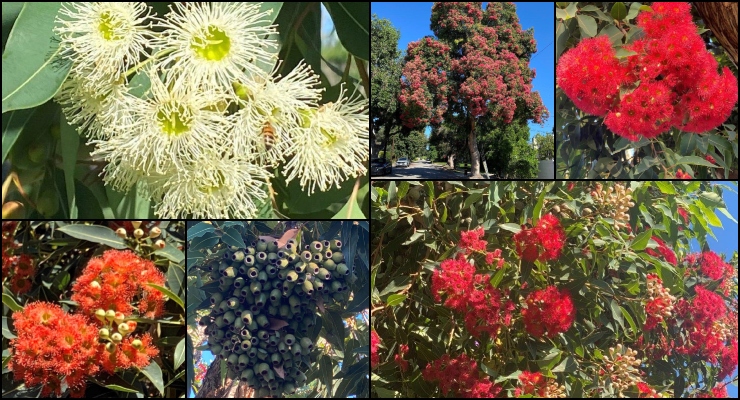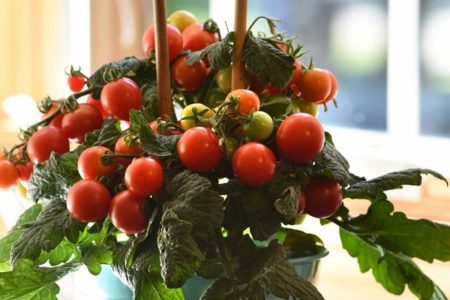
EDITOR’S NOTE: Each month, Pasadena Beautiful Tree Program Chair Emina Darakjy presents a ‘tree of the month’ in order to educate Pasadenans about the trees around them. Many people drive by trees they admire, but have no idea what they are called, or what their growing habits are. Pasadena Beautiful was founded in 1960 by a group of volunteers who saw a need to beautify their city and enhance its tree canopy.
The Corymbia ficifolia belongs to the Myrtaceae family and is native to Western Australia. The colorful tree was originally named Eucalyptus ficifolia and described in an 1860 book by botanist Ferdinand Von Mueller.
In 1995, the name was changed to Corymbia ficifolia. This practice of changing names is common among botanists.
This is an evergreen tree with a slow to moderate growing rate, which can reach a height between 25 to 40 feet with an equal or greater spread, and a dense canopy, making it a good shade tree. The tree is also considered one of the showiest among the eucalyptus family.
The trunk is medium gray to red-brown with a fibrous and fissured bark that also covers the tree’s branches.
The leaves are attractive—ovate, thick, dark green on top and pale green underneath.
In late spring to early summer, the tree is covered with a dazzling display of vivid red clusters of flowers that last through September. Flowers can also be seen sporadically on the tree throughout the year.
Interestingly, because the Corymbia ficifolia is propagated from seeds and not cuttings, an exact flower color cannot be one hundred percent guaranteed. There have been cases where the flowers come out vermillion- orange, rose and on some rare occasions creamy white. To make sure you end up with a vivid red color if that is what one prefers, buy a tree during the summer that is already blooming at a nursery. Regardless of what flower color you end up with, the trees always bloom profusely.
Following the flower display, clusters of persistent large gray-brown to reddish-brown seed capsules resembling urns, appear. The weight of these heavy capsules can sometimes cause the branches to bend and break. It is recommended to remove them, especially on young trees, in order to avoid this problem.
The tree is very hardy, prefers full sun and a well-drained soil. The Corymbia ficifolia does very well in our coastal regions from San Diego to San Francisco but does not tolerate cold weather. The tree requires regular watering at first and is considered drought tolerant once established. Damage to sidewalks from its roots is moderate.
Keeping one’s tree healthy and stress free is the best defense against pests. The Corymbia ficifolia does very well as a street tree or in a park, and he tree nectar attracts a range of wildlife from bees to birds and butterflies.
If one wants to plant a stunning ornamental tree in one’s garden, the Corymbia ficifolia is an excellent choice.











